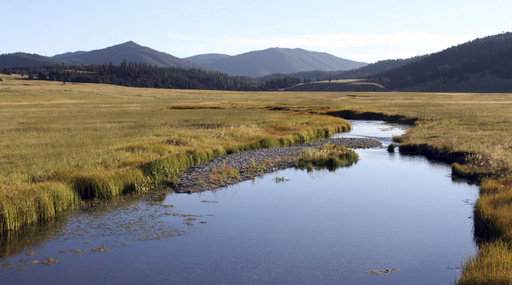
ALBUQUERQUE, N.M. — A recent settlement between the U.S. government and the Jemez Pueblo marks a significant development in a prolonged legal dispute regarding the Valles Caldera National Preserve.
On Friday, attorneys representing the government filed documents with a federal appeals court requesting the conclusion of this litigation, which has persisted since at least 2012. The disagreement arose when the pueblo laid claim to the entire area of the preserve, which encompasses nearly 140 square miles (363 square kilometers).
The agreement, which was signed by U.S. Interior Secretary Deb Haaland, acknowledges the rights of the Jemez Pueblo to utilize a specific area of approximately 5 square miles (13 square kilometers) for traditional cultural and religious practices. This settlement follows a ruling made earlier in 2023, which recognized the pueblo’s ownership rights to the Banco Bonito region within the preserve.
Haaland, who is a member of the Laguna Pueblo and the first Native American to hold a Cabinet position in the U.S., emphasized the importance of preserving the land for Indigenous people. “The lands of this nation have long been vital to the cultural and spiritual practices of Indigenous communities,” she stated. She reiterated the government’s commitment to collaborating with tribes to explore co-stewardship opportunities regarding public lands that also function as ancestral territories.
The Jemez Pueblo maintained that its traditional property rights had not been extinguished, despite a lower court’s 2019 ruling, which granted the U.S. government clear title over the preserve. After appealing the initial verdict, the pueblo shifted its focus and narrowed its claims to four specific areas within the Valles Caldera.
The ruling from the 10th U.S. Circuit Court of Appeals in 2023 affirmed the pueblo’s claim to Banco Bonito but dismissed its contentions regarding the other locations. Legal analysts noted this represented a historic moment, as it was unprecedented for a tribe in the U.S. to successfully assert the return of an aboriginal title that remained unextinguished through legal channels.
For the Jemez Pueblo, Valles Caldera holds immense spiritual significance and is regarded as a historical homeland. The area features extensive grasslands, remnants of volcanic activity, and houses one of New Mexico’s notable elk populations.
As part of the settlement, the National Park Service will retain management responsibilities for Banco Bonito while simultaneously recognizing the Jemez Pueblo’s rights to utilize the land. The Department of the Interior assured that access to this area would remain available to other tribes and the general public, in accordance with existing regulations governing the preserve’s management.
Historical records indicate that various tribes and pueblos have relied on Valles Caldera for hunting, gathering, and cultural practices for over 800 years. Redondo Peak, the tallest mountain in the caldera, has been a crucial site for religious pilgrimages, featuring numerous shrines.
While tribal leaders describe Valles Caldera as a spiritual mother, many legal documents related to the case have been redacted, aimed at keeping information about sensitive traditions and significant cultural sites confidential.
